Exhibition
Mitchell/Riopelle Nothing in Moderation
Nothing in Moderation
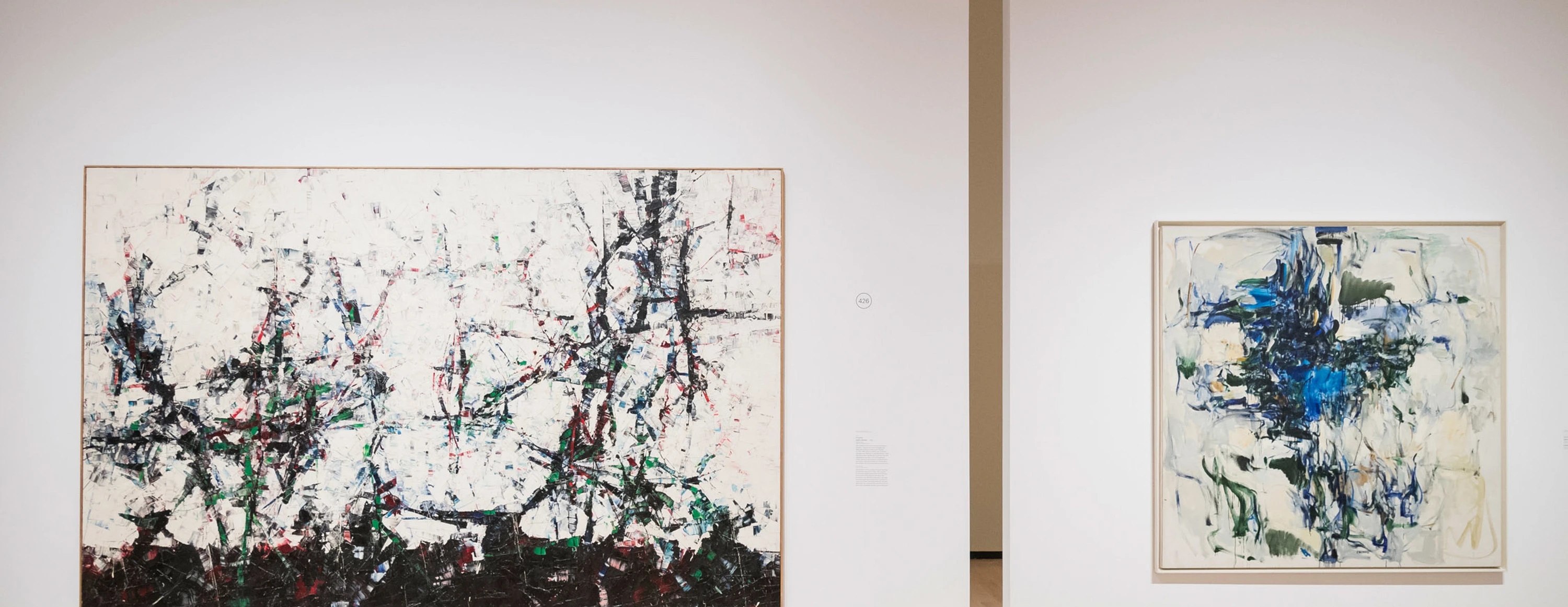
About
Heidi Meister, photographer, Joan Mitchell and Jean-Paul Riopelle in the living room of the studio-apartment on Rue Frémicourt, Paris, 1963. © Heidi Meister. Work shown: centre, Jean-Paul Riopelle, Pleine Saison, 1954, oil on canvas, 129 × 160 cm. Private collection; top left, Jean-Paul Riopelle, Roche d’or, 1961, bronze, 32 × 26 × 24 cm. Private collection; below, an unidentifi ed sculpture © Estate of Jean Paul Riopelle / SODRAC (2017)
A celebration of two giant practitioners of modernity
Some 60 majors works have been assembled to examine their respective artistic careers in terms of their relationship, from their first meeting in 1955 until their separation in 1979. Designed by the MNBAQ and organized in partnership with the Art Gallery of Ontario (AGO), supported by the Joan Mitchell Foundation in New York and the Estate of Jean-Paul Riopelle in Montréal, the exhibition mainly presents large-format paintings, a number of works on paper and archival documents from more than 30 French, Canadian and American lenders, private and museum collections. The presentation explores how the two artists, who shared their lives for nearly 25 years, in Paris, then in Vétheuil in the Seine valley, developed a studio practice and a distinctive body of work while sustaining a broad dialogue focusing on abstraction. Their tastes for the impressionist heritage, nature and a form of provocation certainly drew them together. Their deeply singular conception of painting and work methods were entirely shaped by their romantic relationship.
Joan Mitchell, Piano mécanique, 1958. Oil n canvas, 198,1 × 325,1 cm
National Gallery of Art, Washington, DC. Don d’Addie et Sidney Yates (1996.142.1) © Estate of Joan Mitchell. Photo : National Gallery of Art, Washington, DC
L'EXPOSITION
The presentation explores how the two artists, who shared their lives for nearly 25 years, in Paris, then in Vétheuil in the Seine valley, developed a studio practice and a distinctive body of work while sustaining a broad dialogue focusing on abstraction. Their tastes for the impressionist heritage, nature and a form of provocation certainly drew them together. Their deeply singular conception of painting and work methods were entirely shaped by their romantic relationship.
Seven inviting themes structure the exhibition in four temporary galleries of the Pierre Lassonde Pavilion:
- Prologue: Before the Encounter
- The Encounter and Its Consequences: 1955-1958
- The Rue Frémicourt Years: Resonance and Dissonance, 1959-1967
- The Studios in Vétheuil and Saint-Cyr-en-Arthies
- Separate Territories, 1968-1974
- Canada and the North: Reflections of Two Solitudes, 1975-1977
- Heading towards the End: 1978-1979
- Epilogue: The Death of Joan Mitchell, 1992
ESSENTIAL WORKS
The essential works in the exhibition include Jean-Paul Riopelle’s Saint-Anthon (1954), one of a remarkable series of “white” paintings inspired by the snow-capped peaks of the Austrian Alps. The abstract landscape painting from a private collection in New York is a vast white expanse magnified by the presence of delicate, coloured calligraphy. It very likely attracted the attention of Joan Mitchell, who also focused on the dual nature of the white field, perceived at once as a background and as a space.
Jean-Paul Riopelle, Saint-Anthon, 1954. Oil on canvas, 248 × 388 cm. Private collection, New York © Succession Jean Paul Riopelle / SODRAC (2017) Photo : Acquavella Modern Art, New York
Un jardin pour Audrey (1974), another masterpiece by Mitchell, comes from a private collection in Paris and is one of her most accomplished works. Specialists maintain that it embodies the quintessence of her painting. Riopelle’s painting Mitchikanabikong (1975), loaned by the Centre Georges-Pompidou, Musée national d’art moderne, one of the world’s foremost collections, is a harbinger of the Icebergs series, a triptych that reflects an identity process in which Riopelle signs each component with linear lines that evoke certain enigmatic profiles of the owl, his animal fetish, found both in his sculpture and works on paper. This major work is a must.
Biographical note on Joan Mitchell
1925
Joan Mitchell was born on February 12 in Chicago, Illinois, the second daughter of Marion Strobel, a poet, short story writer and critic (co-director of the review Poetry), and James Herbert Mitchell, a physician. She spent her childhood in an especially stimulating environment. Her father frequently took her to museums. Cézanne, Van Gogh, Matisse and Kandinsky attracted her attention.
1942-1944
Joan Mitchell was admitted to Smith College in Northampton, Massachusetts, where she studied English literature and took art and art history courses. She painted in watercolours outdoors.
1944-1947
She registered at the Art Institute of Chicago to obtain a BFA degree (equivalent to an undergraduate degree in applied arts). She obtained a scholarship to study abroad but the tensions still agitating Europe caused her to postpone the trip until 1948. In December 1947, she went to New York.
1948-1949
In the spring of 1948, a scholarship enabled Joan Mitchell to travel to France, first to Paris, then to Lavandou, in Provence. It was there that she married Barney Rosset.
1950
Joan Mitchell returned to New York, where she settled. There, she met Franz Kline and Willem De Kooning, who initiated her to variations of abstract expressionism and participated in the effervescence of New York artistic life. She became member of the Artists’ Club, to which few women were admitted.
1951
Joan Mitchell participated in the Ninth Street Show exhibition, organized by the Artists’ Club and Leo Castelli, which assembled 61 avant-garde artists including Rauschenberg, De Kooning and Motherwell. During the summer, she registered at Columbia University in art history and in French literatures courses at New York University
1952
Joan Mitchell held her first solo exhibition at the New Gallery in New York. She divorced Rosset, but the two remained friends.
1955
Joan Mitchell spent part of the summer in Paris, where she met several artists, including Sam Francis and Jean-Paul Riopelle, who would be her companion until 1979. Until 1959, Mitchell spent the summer in Paris and the winter in New York. In 1955, she participated, with the members of the Club, in two major group exhibitions that assembled the first generation of abstract expressionists.
1957
She participated in the Artists of the New York School: Second Generation exhibition organized by Meyer Schapiro at the Jewish Museum in New York.
1959
Joan Mitchell permanently settled in Paris, where she rented a studio on rue Frémicourt.
1961
She received the Prix Lissone in Milan.
1962-1967
This period was marked by a series of bereavements that affected her deeply, although she did not halt her activities.
1967
Her first solo exhibition was held at the Galerie Jean Fournier in Paris (she collaborated with Fournier until the end of her life). Upon her mother’s death, she used her inheritance to buy a house in Vétheuil, a small village along the Seine west of Paris, attracted by the recollection of Monet, who lived there before settling in Giverny.
1974
The Whitney Museum of American Art in New York devoted a solo exhibition to Joan Mitchell documenting her career over the previous 10 years.
1977
Mitchell participated in the major exhibition Paris - New York at the Centre Georges-Pompidou, Musée national d’art moderne.
1982
The Musée d’art moderne de la Ville de Paris hosted her first solo exhibition: Joan Mitchell : choix de peintures 1970-1982.
1984
Jean Fournier exhibited the works painted in memory of her sister, who died two years earlier. Joan Mitchell was stricken with jaw cancer and underwent numerous operations and treatments.
1989
She received the Grand prix national de peinture.
1991
She received the Grand prix des arts (peinture) de la Ville de Paris.
1992
Joan Mitchell died in Paris on October 30.
Biographical note on Jean-Paul Riopelle
1923
Jean-Paul Riopelle was born on October 7 on rue De Lorimier in Montréal.
1943-1946
Riopelle studied at the École du meuble under Paul-Émile Borduas. He participated in the first exhibition of Les Automatistes in Montréal in 1946.
1947
Riopelle met André Breton in Paris. He signed the surrealist manifesto Rupture inaugurale.
1948-1949
The manifesto Refus global, written by Borduas, appeared in Montréal in August 1948. Riopelle was one of the 16 signatories. He settled in France at the end of the year and held his first solo exhibition in Paris in 1949.
1954
Riopelle exhibited his work for the first time at the Galerie Pierre Matisse in New York. He also participated in the Venice Biennale with Paul-Émile Borduas and Bertrand Charles Binning.
1955
Jean-Paul Riopelle went to join American painters Sam Francis and Norman Bluhm in a café in Saint-Germain-des-Prés in Paris, where he met Joan Mitchell, who would be his companion until 1979.
1962
Riopelle represented Canada at the Venice Biennale. He obtained an award from UNESCO, after which the National Gallery of Canada organized the exhibition Jean-Paul Riopelle. Painting and Sculpture, which was presented in several Canadian cities and in Washington.
1967
The Musée du Québec (now the Musée national des beaux-arts du Québec) organized a retrospective of his work: Peintures et sculptures de Riopelle. The artist offered the Musée du Québec Sans titre, a large assemblage.
1974
Riopelle had a studio built in the Laurentians and divided his time between France and Québec.
1980-1982
The Canadian Department of External Affairs presented the major retrospective exhibition Jean-Paul Riopelle: Painting 1946-1977, in collaboration with the Musée du Québec and the Musée national d’art moderne (Centre Georges-Pompidou, Paris). The exhibition was presented in France, Québec, Mexico and Venezuela.
1981
The Québec government awarded Riopelle the prestigious Prix Paul-Émile-Borduas.
1991
The Montreal Museum of Fine Arts organized the exhibition Riopelle to mark the opening of the Jean-Noël Desmarais Pavilion.
1992-1996
In his studio on Île-aux-Oies, Riopelle produced Tribute to Rosa Luxemburg, which was exhibited in 1993 at Michel Tétreault Art International in Montréal. During the summer of 1995, the imposing triptych was exhibited in France at the Château de La Roche-Guyon near Paris, in collaboration with the Musée du Québec, which exhibited it in 1996. The event attracted 33 000 visitors in five weeks.
2000
In May, the Musée du Québec permanently devoted a gallery to Jean-Paul Riopelle and his work.
2002
Jean-Paul Riopelle died on March 12 on Isle-aux-Grues.
Jean-Paul Riopelle, La Ville, 1949. Oil on canvas, 100 × 81 cm. Private collection © Succession Jean Paul Riopelle / SODRAC (2017) Photo : Christine Guest
Tribute to Rosa Luxemburg, an apotheosis
To round out the exhibition, be sure to visit or re-visit Tribute to Rosa Luxemburg located in the Riopelle Passage by CGI linking the Pierre Lassonde Pavilion to the rest of the museum. The MNBAQ’s masterpiece, a monumental triptych produced in a single sweep when Joan Mitchell’s death was announced, is a long fresco comprising 30 paintings whose signs and codes hint at his meeting with his former companion. Here, it assumes its full majesty and meaning.
Two interactive experiences devotes to the works of Mitchell and Riopelle
The Hydro-Québec mediation space will enable visitors to engage in two digital experiences linked to the exhibition: Peindre le geste and Mitchell | Riopelle. Dans l’intimité.
The fascination engendered, in particular, by the works of Mitchell and Riopelle can express itself through a stimulating virtual experience in the exhibition galleries. Peindre le geste, a 3D interactive device produced by SAGA, allows for the reproduction of the two artists’ creative gestures using a brush, a knife or a spatula. Participants will also have access to a palette of 10 colours that the artists used. The resulting work, projected on a wall, can also be shared on Facebook or sent by email.
Visitors can also consult the tablet computers in the mediation space, where 36 archival photographs of the couple accompanied by captions and divided into four major periods afford a fascinating glimpse of the intimate lives of two artists at the peak of their artistic powers.
Exhibition conceived byt he Musée national des beaux-arts du Québec, organized in partnership with the Art Gallery of Ontario (AGO), supported by the Joan Mitchell Foundation in New York and the Estate of Jean-Paul Riopelle in Montréal.
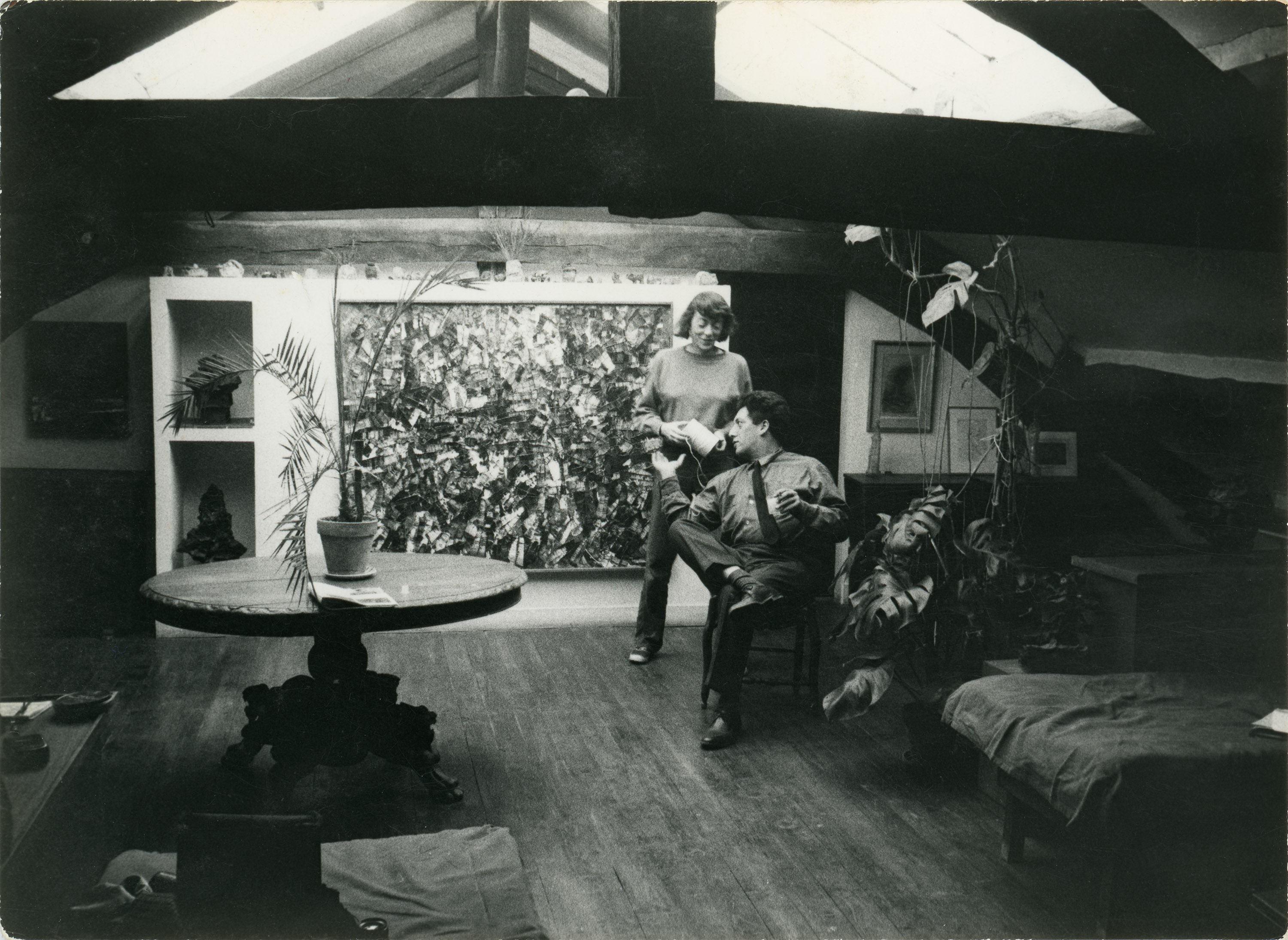


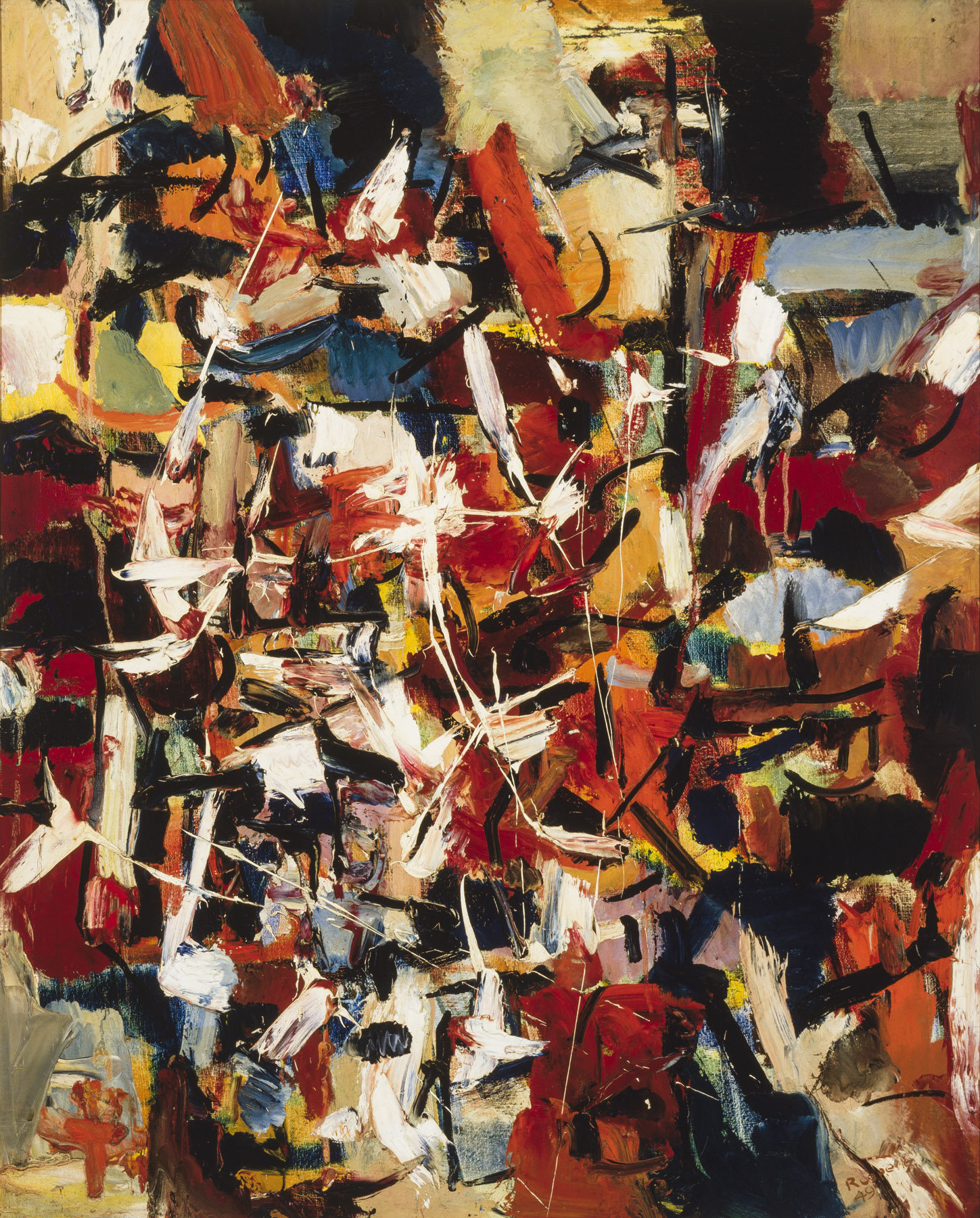
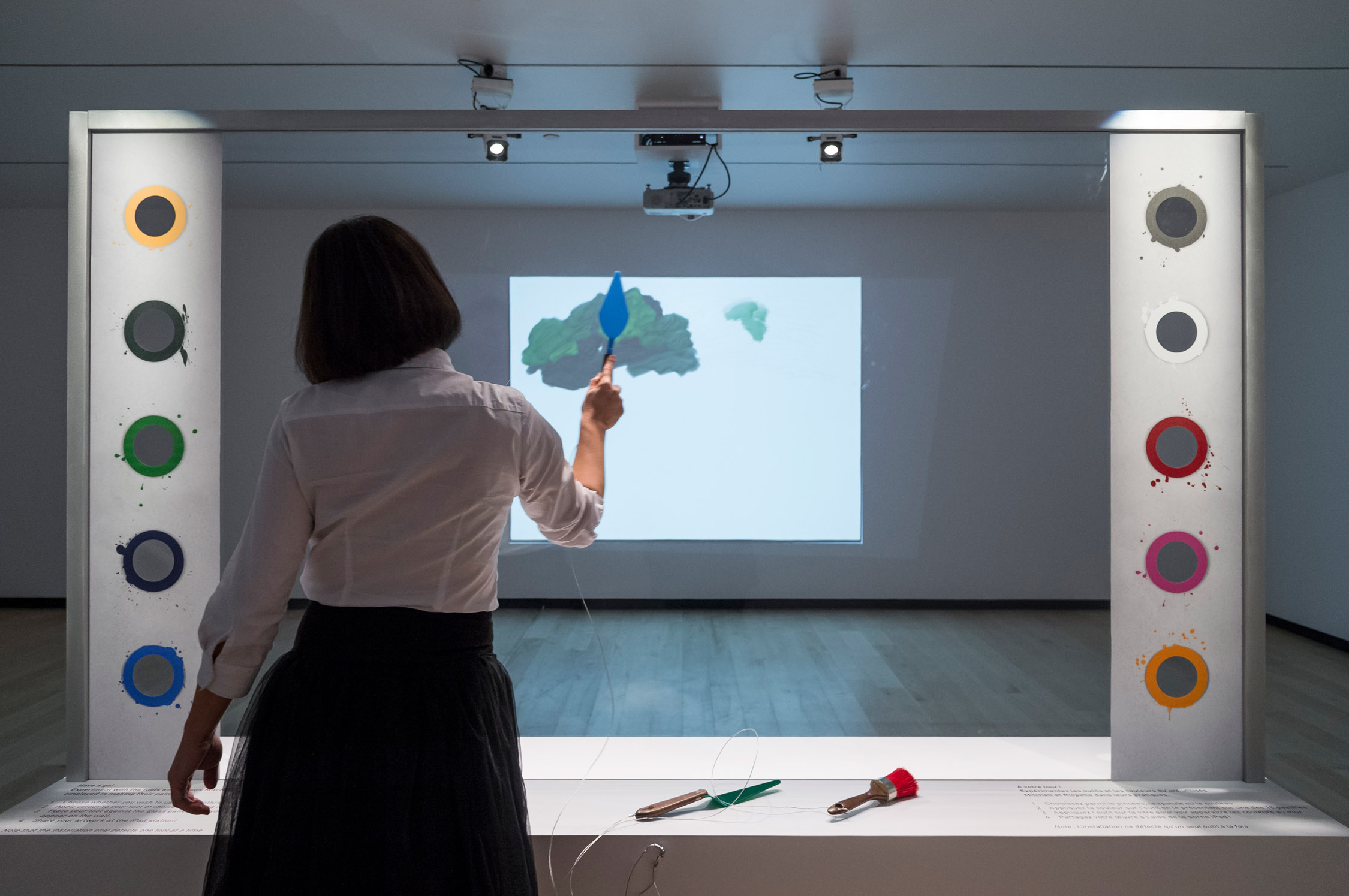








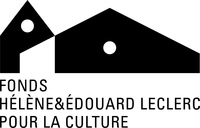

Give us your feedback